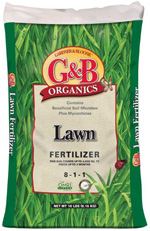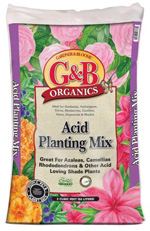|

      
|
 | Featured Quote: "We can complain because rose bushes have thorns, or rejoice because thorn bushes have roses." |
 |
|
Planting Tropical plants are popular now and can be brought into any garden, whether tropical, cottage, or country themes. Flowering shrubs include hibiscus, brugmansia (Angel's Trumpet), canna, bougainvillea, and vines such as passion flower or Burmese honeysuckle. Large-leaf evergreens include philodendrons, xanadu, tree ferns, and gingers. You can even include abutilon, which comes in several colors including red, yellow, orange, and pink. Harvesting Maintenance It's feeding time for your flowerbeds, roses, vegetables and warm-season lawns. Come in and ask one of us which fertilizers will be best for each of your plant needs. We offer a wide selection of fertilizers: multipurpose, organic, and slow release. You can do some pruning, even though it's summertime. Fuchsia 'Gartenmeister,' gaura, and salvias will look much better if cut back by about 1/3. Oh...and your catmint, too. If you forgot to increase your watering from the spring months, you must do so now. Trees (non-citrus) and shrubs will need deep soaks once each month in the summer, and regular irrigation in between. Citrus and your flowerbeds need regular weekly watering. Those of you growing tomatoes and peppers, watch for tomato hornworms. They will need to be hand-picked from your foliage. As usual, mulch, mulch, mulch! We will always tell you to mulch. This does not mean mound up the mulch to 5 feet. It means continue to replenish the mulch and maintain a 2-4 inch blanket over your soil. So when you hear us singing the MULCH song, you know just what we mean! |
 |
|
A tree or a shrub can create a delightful focal point in your patio garden design. 
Many of our gardens have at least one specimen plant, usually a tree but sometimes a shrub. A specimen plant is one that is eye-catching, beautiful, often architectural in form, and can stand alone in a yard or garden. Such specimen plants do not have to reside only in the ground. You can bring one or more onto your patios, decks or balconies and create the same visual effect. Many smaller scale patio trees are absolutely wonderful specimens, and they can remain perfectly happy living in a container. Even if you don't have a backyard, you can still have a tree on your patio. Also, many people forget to consider shrubs for their containers. Many of our shrubs are just as happy and healthy in a container as in the ground. How simple it is to bring foliage and flower color into your patio gardens! Just pick your favorite shrub and design your patio garden around its color and form. And you know what else is great? You can prune many shrubs into an open tree form, creating a beautiful specimen piece. They are beautiful in an open graceful form, like an oriental painting. 
Now, you may be tempted to plant flowers at the base of your tree. They will add color but their roots will compete with the root system space of your new tree or shrub. Instead, try mulching using colored landscape glass, stones in your favorite colors and textures, or bark. Of course, container selection is very important--your container must be large enough for the plant's future root system growth. Potting soil and fertilizers are also very important. Select a high quality potting mix, and do not forget to mix in a controlled release fertilizer. Also, remember that moisture retention is frequently a problem with containers, so mix in a soil polymer that will hold on to the moisture between waterings. We'll match you up with the correct products once you've selected your tree and/or shrub. Well, what are you waiting for? Summer is here and it is time to redecorate your outdoor living space. So come on in! We'll be looking for you in our tree and shrub section. |

|
Watering properly is one of the best ways to ensure you have a beautiful lawn and garden, and will help lower your water bill as well. Here are a few water-wise tips that can make a big impact on water savings and plant health. * First off, consider converting your overhead irrigation to drip irrigation for all non-lawn areas if you haven't already done so. This concentrates the water where it needs to be (around the plant root ball) while eliminating excess runoff and evaporation. * Water early in the morning when the temperatures are cooler and the sun isn't as intense. Thus, more water will penetrate your plants instead of evaporating into the air. The best time is between 4:00 a.m. and 8:00 a.m. * When hand watering, make sure to place your nozzle near the base of the plant instead of above the plant where water is wasted wetting the foliage. * Water lawns more deeply instead of more frequently as it gets hotter. You should have your timers set to water only until your lawn reaches the point of runoff. After that no additional water can be absorbed. Most lawns can get by on 20-30 minutes of water every three days. They may not look as good but they will survive, and it will be better for them in the long run. Deeper watering encourages the roots to go down further to chase the water which results in less heat stress on the roots. * Raise the mowing height on your mower. Taller grass cools and shelters the roots below, helping to reduce the need for more frequent watering. * Add a granulated soil conditioner to the lawn to help break up compacted soil particles and aerate your soil, allowing roots to penetrate deeper into the soil. This also helps the lawn become more resistant to pests, disease and weeds. * Cover open areas around plants and trees with a 2"-3" layer of mulch to reduce evaporation, keep the soil moist and cool, and to help prevent weeds. * Make sure to pull weeds as needed to reduce competition for water, and feed your garden at least quarterly to help your plants stay healthy and strong. Use a plant food with lower, slow-release nitrogen to prevent rampant, soft, fleshy new growth that uses lots of water. * Add a granulated soil polymer to potting soil when planting in containers. It expands when watered, holding water in the soil longer. * Leave a two-inch space between the top of the soil and the rim of your container so that there is enough room for holding water without its flowing down the sides of your pot. Place a layer of mulch or bark on top of the soil to help retain moisture. By incorporating these garden tips every year--year-round and not just in dry periods--your garden will not only be set up to survive dry conditions, but will also use less water all year round. |

|
Invasive plants--just the term brings to mind visions of horror movies such as the classic Little Shop of Horrors or, more recently, The Ruins. But here in the "real" world, what, exactly, is an invasive plant? Should it be a valid concern and, if it is, what can we do about it? Invasive plants are no different than their counterparts in the animal and disease arenas. An invasive plant is generally defined as one that has the ability to grow aggressively outside its natural range. Oftentimes, its ability to do this stems from the fact that it is growing outside its native range, because the diseases, insects and foraging animals that naturally would control its growth and spread are not present in its new habitat. There are many factors in determining whether a plant is invasive or not. What do we mean? For starters, some plants are more invasive than others; some considered as moderately invasive can be controlled easily with a little well-timed maintenance. Climate and location play an important role. Many plants are considered invasive in some parts of the country and not in others. Five generally recognized attributes of invasive plants are:
Why should you be concerned? Invasive plants can disrupt many natural habitats, ultimately affecting wildlife populations and choking out native plant species. Most people would agree with the statement, "Variety is the spice of life." Where allowed to run rampant, invasive plant species can severely restrict this biodiversity, both in terms of plant life and the wildlife that depend on it to survive. They are especially problematic in areas such as wetlands, sand dunes and fire-prone areas--in fact, over $100 million per year is spent in the U.S. combating invasive plants in wetlands alone. Where do these invasive plants come from? Sometimes, their arrival at their "new homes" is completely accidental, as seed in agricultural products or in shipments from overseas. Other times, they are sold at garden centers. Because of gardening enthusiasts’ ongoing quest for hardy, drought-tolerant, fast-growing specimens, these plants are often propagated and offered to the public to fulfill these desires. Only later is it discovered that these plants may offer a little too much of a good thing. Kudzu (known as "the vine that ate the South") is one of the more infamous examples of this. It was originally introduced as a ornamental shade vine for porches, arbors and such. Now it's shading (and killing) trees all over the Southeast. What can you do? This is where we come in. Next time you shop for plants, let us know that you would like to avoid potentially invasive plants in your garden. Or ask us how to keep those "hardy, drought-tolerant, fast-growing" plants from becoming invasive. For instance, much of the mint family can be invasive--but they are reasonably safe to grow in pots, or in an area of the garden where you can easily remove "volunteers." And, of course, they are quite safe to grow indoors! Make use of our expertise to help guide you in selecting plants and growing methods that will not present a problem in the future--and help preserve the plants and wildlife indigenous to our area! |

|
White grubs are damaging pests that begin invading lawns in early spring and again in summer. Grubs do their damage below ground, so the problem often goes undetected until too late. Beetle grubs can turn a fine looking lawn into a patchwork quilt of yellow spots. In addition, birds and other animals will often start digging up your lawn looking for the tasty grubs to feed on. The grubs are actually larvae of beetles and other insects; most are C-shaped and off-white with a dark head. There are several types of grubs that are capable of damaging lawns, with two life cycles in a year. When you have grubs, the damaged areas of grass can be easily lifted, and many times the grubs can be seen feeding on the edge of the healthy grass in the damaged area. We carry beneficial nematodes as a natural control. They are safe for use around beneficial insects (as well as children and pets), unlike poisons, and will do an excellent job of getting rid of grubs. There are also chemical products that are very effective for a grub problem, but only at certain times of year. |
 |
|
What does the term "systemic" mean on a chemical label? Answer:
Most systemic products should not be used on edible plants or crops. |

|
What You Need:
|
|
Step by Step:
|
 |
Written content © Garden Partners LLC, or respective authors. All Rights Reserved. Privacy Policy. All written content contained in this site is protected by United States copyright law and may not be reproduced, distributed, transmitted, displayed, published, or broadcast without prior written permission of Garden Partners, LLC. You may not alter or remove any trademark, copyright or other notice from copies of the content. |



